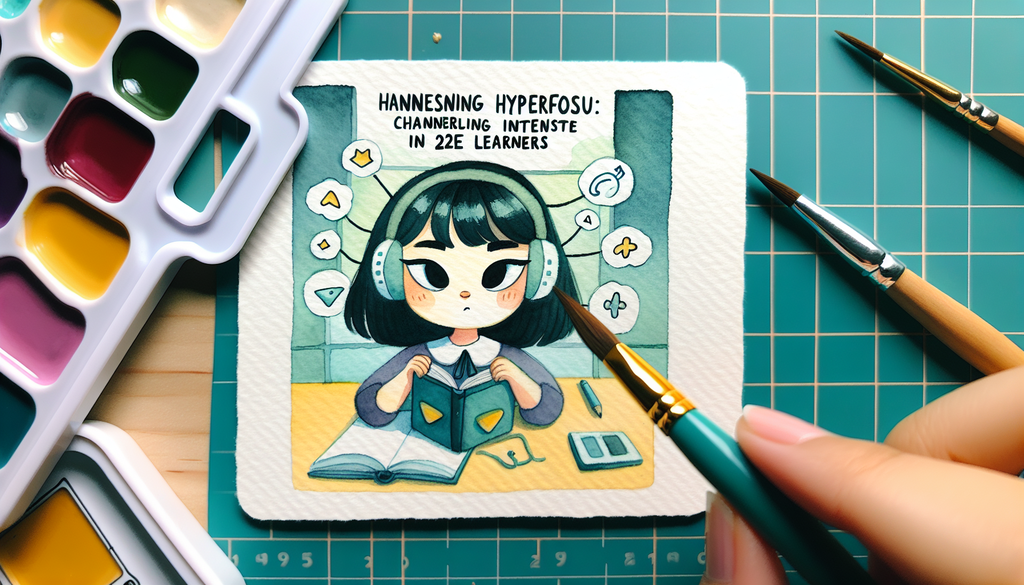Harnessing Hyperfocus: Channeling Intense Concentration in 2e Learners

Twice-exceptional learners, or 2e learners, possess both exceptional abilities and learning differences. One trait frequently noted in these individuals is “hyperfocus”, the ability to concentrate intensely on a single task or interest area for extended periods. Although this can be a source of frustration, particularly in traditional learning environments, it can also be harnessed productively to facilitate learning and growth. In this post, we’ll delve into strategies for channeling hyperfocus in 2e learners.
Understanding Hyperfocus
Hyperfocus is a common characteristic in neurodiverse kids, often seen in conditions like ADHD, autism, and gifteds with a high concentration tendency. These kids can enter a state of profound focus, blurring all else to the background. This focus can raise challenges in traditional educational setups where the curriculum hones various subjects within a given session. However, we can also see this trait as an advantage, a superpower even, allowing the child to dive deep into a subject, master it, and innovate.
Strategies to Harness Hyperfocus
So, how can we tap into this superpower for valuable learning experiences?
1. Match Interest Areas:
Link learning objectives with the child’s areas of interest. By connecting new concepts to a topic the 2e learner is passionate about, it encourages the child to engage profoundly, facilitating a deeper understanding.
2. Encourage Breaks:
While deep concentration can be beneficial, rest periods are essential in maintaining mental energy. Introduce brief, scheduled breaks, filled with physical activity or hobby, to ward off exhaustion.
3. Maintain a Flexible Schedule:
Rather than constructing rigid timetables, try building a flexible routine that can accommodate the hyperfocus sessions of your 2e child.
3. Integrate Organizational Tools:
To help balance intense focus periods and daily obligations, incorporate organizational and planning tools. Use mind-mapping or create a vision-board to help your child visualize his/her goals and responsibilities.
4. Encourage Self-Awareness:
Let your child understand his/her traits, patterns, strengths and challenges. Allow them to recognize the value of their hyperfocus and identify times when their concentration may need redirection or breaks. Self-awareness can help children self-regulate and wield their traits productively.
Remember, just as every 2e learner is unique, so will be the strategies that work best for them. Consider these methods as starting points, encourage your child’s input and feedback, and adjust as needed.
Hyperfocus, when embraced and skillfully guided, can enable 2e learners to dig deep into their passionate pursuits and achieve brilliance. As parents and caregivers, our role is to appreciate and guide this intensity, helping our 2e children harness all that their unique minds offer.
For more insights into understanding and supporting twice-exceptional children, refer to our posts on Breaking Myths: The Reality of Raising a Gifted Child, Creating Artistic Spaces for Gifted Young Artists, and Balancing Challenge and Support for Gifted Learners at School.